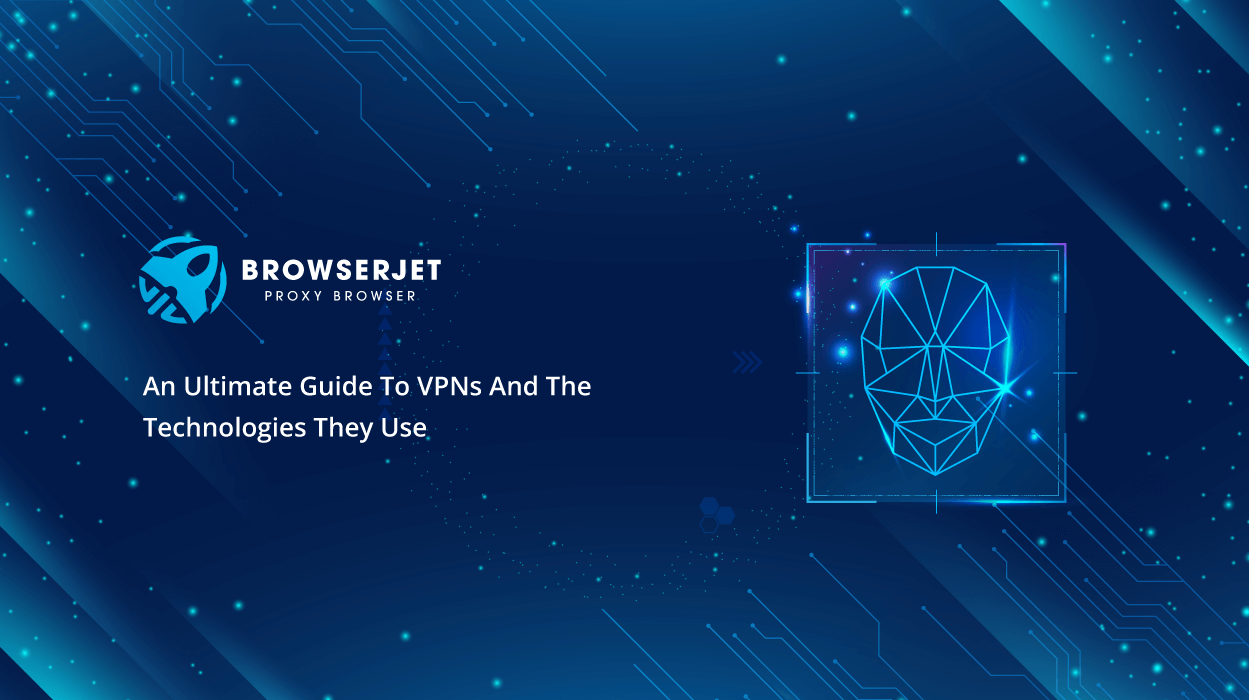An Ultimate Guide To VPNs And The Technologies They Use
The digital world now accounts for a large portion of our activities, both at work and in our personal lives. Using the Internet for daily activities such as online shopping, online banking, and others exposes the information transmitted over the network to a variety of risks. Cyber-attacks, human errors, and system failures can expose data sent over the network and allow third parties to intercept it for fraudulent or criminal purposes.
Therefore, when it comes to privacy concerns, VPN (virtual private networks) software comes to mind. You can also use a
browser with a built-in proxy, which can be beneficial from a variety of perspectives, particularly regarding security. VPN is one of the most widely used solutions for accessing the internet in a secure environment.
VPNs And The Technologies They Use
What Is VPN?
VPNs, or virtual private networks, extend the reach of LANs without the need for owned or leased private lines. VPNs can be used by businesses to provide network access to remote and mobile users, connect geographically separated branches into a unified network, and enable the remote use of applications that rely on internal servers.
VPNs can employ either one or both of two mechanisms. One option is to use private circuits leased from a trusted communications provider: this is referred to as a trusted VPN on its own. The other option is to send encrypted traffic over the public Internet: this is known as a secure VPN. A hybrid VPN is one that uses a secure VPN over a trusted VPN. A hybrid VPN is one that combines two types of secure VPN into a single gateway, such as IPsec and Secure Sockets Layer (SSL).
Trusted VPNs
Implementations of trusted VPNs have progressed over time from raw private circuits leased from telecommunications vendors to private IP network circuits leased from Internet service providers. ATM circuits, frame-relay circuits, and Multiprotocol Label Switching are the primary technologies used to implement trusted VPNs over IP networks (MPLS).
ATM and frame relay work at the data link layer or Layer 2 of the OSI model. (The physical layer is Layer 1, and the network layer is Layer 3.) MPLS emulates some properties of a circuit-switched network over a packet-switched network, and it operates at a layer known as "2.5," which is intermediate between the data link and the network. MPLS is gradually replacing ATM and frame relay in the implementation of trusted VPNs for large corporations and service providers.
Secure VPNs
IPsec with encryption, IPsec with Layer 2 Tunneling Protocol (L2TP), SSL 3.0 or Transport Layer Security (TLS) with encryption, Layer Two Forwarding (L2F), or Point-to-Point Tunneling Protocol can all be used in secure VPNs (PPTP). IPsec, or IP security, is a network layer standard for encrypting and/or authenticating IP packets. IPsec uses a set of cryptographic protocols to secure network packets and exchange encryption keys.
Since Windows 95 OSR2, Microsoft has included PPTP clients in all versions of Windows; PPTP clients are also available in Linux, Mac OS X, Palm PDA devices, and Windows Mobile 2003 devices. Since Windows NT 4.0, the company has included PPTP servers in all of its server products. Since it is widely available, free, and simple to set up, PPTP has become very popular, particularly on Windows systems. However, it has not always been the most secure of the secure VPNs, as implemented by Microsoft.
To Wrap Up
This was all the information we could gather about VPNs. If you’re looking for secure browsing and you need a
encrypted web browser and a built-in VPN, you must try the Browser Jet Proxy browser. You can visit our blog section to learn more.

